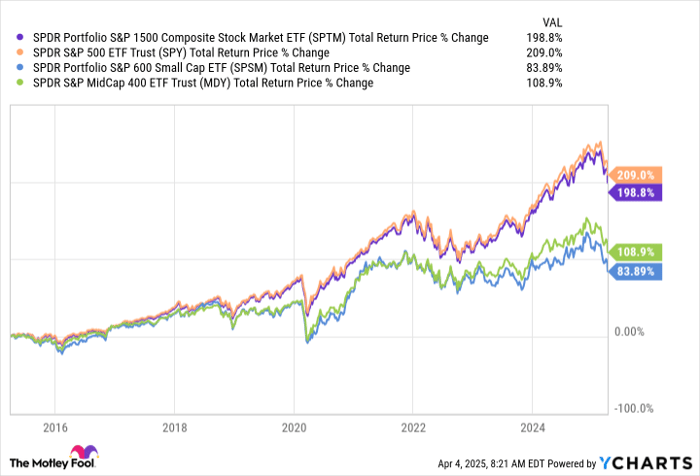Is Netflix the Perfect Recession Stock?
Netflix (NASDAQ: NFLX) has changed the media landscape, not once but twice. First it altered the way consumers rented DVDs and then it basically helped to create the streaming business. Both times it used a subscription model. And that model is what makes this company so resilient during economic downturns. It could be the perfect recession stock, but does that make it worth buying today?
What does Netflix do?
Netflix basically provides the software platform through which consumers can stream media. It charges monthly fees to consumers for the use of the platform. The subscription revenue it generates is used to pay for the content that Netflix offers on its service. In the early days, the company was busy building its software offering and spent heavily on content to attract consumers. But it has now gained enough scale that it is a sustainably profitable business.
Where to invest $1,000 right now? Our analyst team just revealed what they believe are the 10 best stocks to buy right now. Learn More »

Image source: Getty Images.
The subscriptions are annuity-like income streams. The key here is that a monthly subscription to Netflix is fairly low cost relative to what it would cost to go out to see a movie in a theater. And that's true for just for a single person, the benefit gets even greater for couples and greater still for couples with children. And since Netflix can be used on multiple types of devices, the service can, essentially, travel with a customer. There are a lot of positives here and very few negatives.
Which is why recessions aren't that big a deal for Netflix's business. While consumers may pull back on going to the movies, or other out-of-home entertainment, they probably aren't going to cut off Netflix unless they have no other choice.
The company sailed through the brief recession during the coronavirus pandemic period. But the bigger test was the Great Recession, where revenue didn't skip a beat despite the length and depth of the economic downturn. If history is any guide, the next recession shouldn't be too much of a headwind for the company, either.
Is Netflix worth buying now that economic uncertainty is high?
The key words above are "too much of a headwind." That's because Netflix was still in an early stage of growth during the Great Recession. It has reached a far more mature state today, so there's a chance that a recession will have a bigger impact on the top line. Given the nature of its media business, however, it seems highly unlikely that Netflix's sales and earnings will suddenly plunge.
This dynamic was highlighted in the company's first-quarter results. The company's revenue was ahead of its guidance, which is a very good sign. But management refrained from updating its full-year guidance. That suggests that the company is worried that the strong first quarter will be offset by weaker quarters later in the year.
That's hardly the end of the world, however, and is probably a prudent decision given the economic uncertainty. Netflix is still likely to be a strong performer even if there is a recession. The problem isn't the company's business, it is the stock's valuation. The stock's price-to-sales, price-to-earnings, and price-to-book value ratios are all above their five-year averages. This suggests the stock is expensive, noting that the shares are trading near their all-time highs.
To paraphrase famed value investor Benjamin Graham, even a good stock can be a bad investment if you pay too much for it. And it looks like investors are paying a high price for the perceived safety of Netflix's streaming business.
Netflix's business is resilient, but it stock may not be
If you are looking for an investment that will survive a recession in relative stride, Netflix's business seems highly likely to do just that. However, it is unclear what will happen to the stock, which appears to be pricing in a lot of good news. And given that management is taking a cautious stance with its full-year 2025 guidance, it probably makes sense for investors to take a cautious stance with the company's richly valued stock.
Should you invest $1,000 in Netflix right now?
Before you buy stock in Netflix, consider this:
The Motley Fool Stock Advisor analyst team just identified what they believe are the 10 best stocks for investors to buy now… and Netflix wasn’t one of them. The 10 stocks that made the cut could produce monster returns in the coming years.
Consider when Netflix made this list on December 17, 2004... if you invested $1,000 at the time of our recommendation, you’d have $591,533!* Or when Nvidia made this list on April 15, 2005... if you invested $1,000 at the time of our recommendation, you’d have $652,319!*
Now, it’s worth noting Stock Advisor’s total average return is 859% — a market-crushing outperformance compared to 158% for the S&P 500. Don’t miss out on the latest top 10 list, available when you join Stock Advisor.
*Stock Advisor returns as of April 21, 2025
Reuben Gregg Brewer has no position in any of the stocks mentioned. The Motley Fool has positions in and recommends Netflix. The Motley Fool has a disclosure policy.






